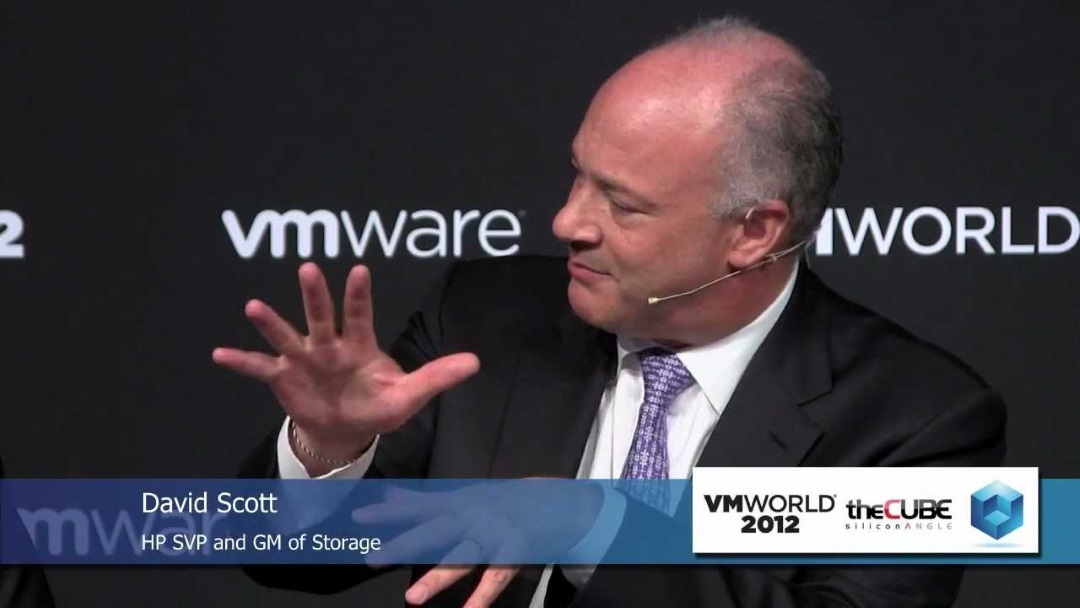 NEWS
NEWS
 NEWS
NEWS
 NEWS
NEWS
David Scott See A Good Future for HP & #Par
David Scott, SVP & GM, HP Storage, discussed the integration of 3PAR into the HP product and service range after the company’s acquisition, along with the company’s storage strategy, in a live interview from HP Discover Barcelona, with theCUBE co-hosts John Furrier and Dave Vellante.
“Overall, we’re managing to now handle the transition as some of our older architecture fails, we’ve seen a one percent year to year growth,” Scott explained. With 3PAR, “HP did a fantastic job with the integration,” he added. “It really made sure that it protected the value that it acquired. It made sure it took the best of 3PAR and actually integrate it into HP. We managed to keep our core engineering talent.”
3PAR focuses on delivering a polymorphic entity, meaning high end integration, evolved into the flash-optimized server array. “People like simplicity and that is what 3PAR is delivering,” Scott said.
Asked to explain how the performance curve of the polymorphic architecture scales up and down, Scott said that “one of the key elements of the polymorphic architecture is that it actually has to start at the high end. Then you can bring it down; as you bring it down scale, you are able to reach price points or different performance points.”
Explaining how the product differentiates, Scott said HP’s major competitor EMC, if asked for tier 1 architecture, will sell you a dedicated product, and other different architectures for other tiers, each with different approaches to training. Where interoperability is concerned, it costs more and is harder to run all those different environments together. HP offers only one architecture, which helps avoid these issues.
Early after his move to HP, Scott said “it was clear to me that delivering storage and IT in general as a utility service was inextricably going to become the direction where the industry was going. 3PAR was going to follow in that path. That view of the world actually came true,” with public cloud, virtualized enterprise applications, etc.
“Our first customers were those people who were in that public hosting service provider market building out their own private cloud services to provide the needed agility for their business,” Scott explained. “That is where the synergy with HP came back in. That’s why the synergy of the 3PAR acquisition made so much sense to HP.”
Last year, the division reported over a billion dollars of revenue, Scott stated. “We couldn’t do it as fast” without HP. “The great thing about HP is amazing customer coverage and fantastic channel partner network.”
Commenting on the software-defined trends, Scott said “big public cloud guys have always done that. As there is a need for the ability to do software defined without sacrificing performance in the area of software defined data centers as a whole, HP has a strong position” in the market. Software-defined networking, capabilities in software-defined storage, being able to run virtual storage appliances on industry standard hardware, are also aspects that HP is addressing.
“We have that platform delivering already today. we’re the clear leader,” offering very rich functionality, Scott boasted. “For 2-3 tier service providers that want to build a scale out architecture, this is a really good alternative. We fundamentally have this leadership technology, we’ve expanded it into the back up and recovery stage. We also have the huge strength today of our industry standard server business.”
Scott went on to cite IDC latest figures on Q3 2014 for the mid-range private segment, showing 3PAR has grown over 300 percent year-over-year. “Our channel partners love the platform, we are going out and taking out NetApp and EMC installed base. We feel very encouraged by that momentum,” he said.
The main differentiators are performance, endurance, efficiency when you scale out on the all-flash array. 3PAR architecture applied to all-flash arrays is a great competitive arrangement. Customers “can keep the 3PAR investment and move to the all-flash world. The architecture applies very well from an endurance point of view to flash.”
THANK YOU